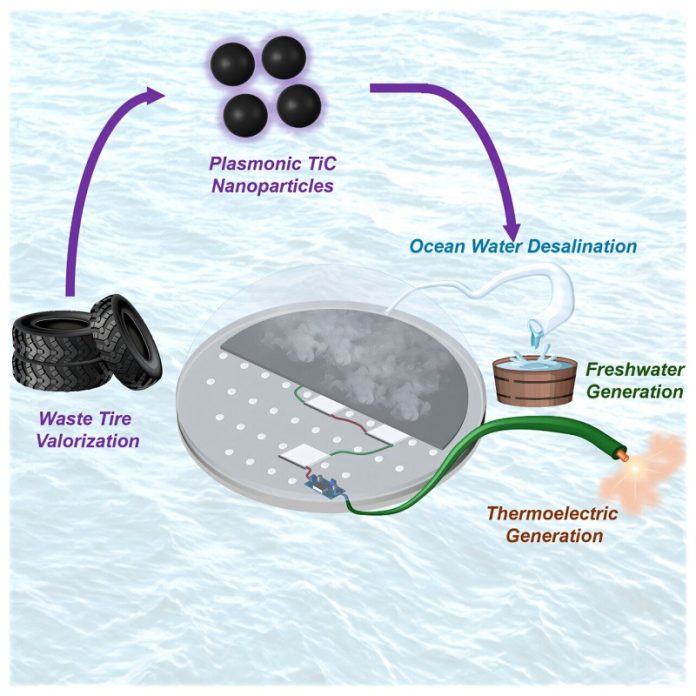
Imagine having a device that could turn salty ocean water into fresh drinking water using only sunlight, all while helping recycle old tires.
Researchers at Dalhousie University have developed a low-cost, portable water desalination device that could do just that, potentially providing clean water to people in remote or water-scarce areas around the world.
This exciting development could help address global water scarcity, a major issue as access to safe drinking water becomes increasingly challenging.
The unique device, called a floating solar still, works by using the sun’s energy to desalinate (remove salt from) seawater.
It’s designed to float on the water’s surface and capture sunlight, which heats up the device and causes water to evaporate.
This evaporation process leaves the salt behind, and the fresh water condenses under a clear plastic dome on top, where it can then be collected and used.
Dr. Mita Dasog, a professor of chemistry at Dalhousie University and one of the lead researchers, explains that the technology at the core of this invention is called refractory plasmonics.
This field focuses on creating materials that can withstand high temperatures and harsh conditions while efficiently capturing sunlight and converting it to heat.
What makes this device especially interesting is its use of a surprising material: old tires.
Most desalination technologies rely on expensive metals like gold and silver to efficiently convert sunlight to heat, but the Dalhousie team found a way to replace these metals with materials sourced from used tires.
Through a process called pyrolysis, which involves heating carbon-based materials in the absence of oxygen, the team created a carbon material that can be used in place of these costly metals.
This eco-friendly approach makes the device cheaper to produce while also recycling tires that would otherwise take hundreds of years to break down in landfills.
Dr. Dasog notes that using recycled tires aligns well with the concept of a circular economy, where waste products are repurposed instead of discarded.
“This research perfectly aligns with the theme of Circular Economy Month by turning used tires into a crucial component of a water desalination device,” she says.
The device itself is quite simple yet effective. It has a wicking system that draws seawater up to the surface, where it evaporates due to the heat generated by the sunlight. The fresh water then condenses on the dome above, and the salt is left behind on the device’s surface.
Early tests have shown that the device can produce up to 3.67 liters of freshwater per day, which is a record-breaking amount for a passive solar still.
Not only does this device desalinate water, but it also disinfects and decontaminates it, making it even more valuable for communities without access to clean drinking water.
The researchers believe this technology has the potential to make a big difference in developing countries or remote areas where access to clean water is limited.
They are planning further tests in South Asia next summer, with hopes to eventually make the device widely available worldwide. The still is lightweight and portable, which could be especially helpful for communities displaced by conflict or climate change.
A unique feature of the device is that it can also generate a small amount of electricity, enough to power sensors that check water quality. This means the device can not only provide fresh water but also monitor its purity, ensuring it’s safe to drink.
Dr. Matthew Margeson, another lead researcher on the project, shares that “maximizing the use of sunlight means our plasmonic solar still can generate large amounts of water while maintaining a simple design.”
The Dalhousie team hopes that by 2025, the device will be commercially available and ready to serve communities in need.
This invention stands out as an example of how simple, affordable, and sustainable technology can tackle some of the world’s biggest challenges, offering a lifeline to those who need it most.



